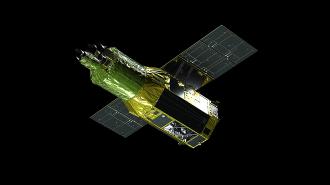Update, 9/7/23, 3:55 pm ET: JAXA launched the rocket carrying XRISM at 7:42 pm ET on September 6. Thirteen minute later, it placed the X-ray observatory into Earth’s orbit — kicking off a new era in space exploration.
Update, 8/28/23, 3:45 pm ET: Poor weather forced JAXA to postpone the planned launch of XRISM by a day. It then scrubbed the rescheduled launch just 30 minutes prior to lift off due to inclement weather. A new launch date has yet to be announced.
NASA and JAXA are just hours away from launching their X-ray Imaging and Spectroscopy Mission (XRISM), an X-ray observatory expected to revolutionize our understanding of the most energetic objects in the universe.
X-ray specs: X-rays are a type of electromagnetic radiation, just like visible light, but with shorter wavelengths and higher energies. Many astronomical objects emit X-rays, and by studying the radiation, scientists can glean new insights into those objects.
“X-ray astronomy enables us to study the most energetic phenomena in the universe,” said Matteo Guainazzi, a XRISM project scientist at ESA, which is also contributing to the mission.
“It holds the key to answering important questions in modern astrophysics: how the largest structures in the universe evolve, how the matter we are ultimately composed of was distributed through the cosmos, and how galaxies are shaped by massive black holes at their centers,” he continued.
The mission: XRISM (pronounced “crism”) is a next-gen X-ray observatory, and its primary instrument — called Resolve — is a spectrometer co-developed by NASA, JAXA, and ESA.
When X-rays hit Resolve’s ultra-cold detector, they’ll cause tiny temperature increases. Those measurements can then be used to determine the various X-ray energies and their intensities, creating a “spectra” for the object XRISM is observing, like an X-ray fingerprint.
“With current instruments, we’re only capable of seeing these fingerprints in a comparatively blurry way,” said Brian Williams, a XRISM project scientist at NASA. “Resolve will effectively give X-ray astrophysics a spectrometer with a magnifying glass.”
Looking ahead: An H-IIA rocket carrying the new X-ray observatory is scheduled to launch from Japan’s Tanegashima Space Center at 8:30 pm ET on August 26. Once deployed into low-Earth orbit, XRISM is expected to remain operational for three years — and yield countless new insights into the universe.
“Resolve will give us a new look into some of the universe’s most energetic objects, including black holes, clusters of galaxies, and the aftermath of stellar explosions,” said Richard Kelley, NASA’s XRISM principal investigator. “We’ll learn more about how they behave and what they’re made of using the data the mission collects after launch.”
We’d love to hear from you! If you have a comment about this article or if you have a tip for a future Freethink story, please email us at [email protected].






